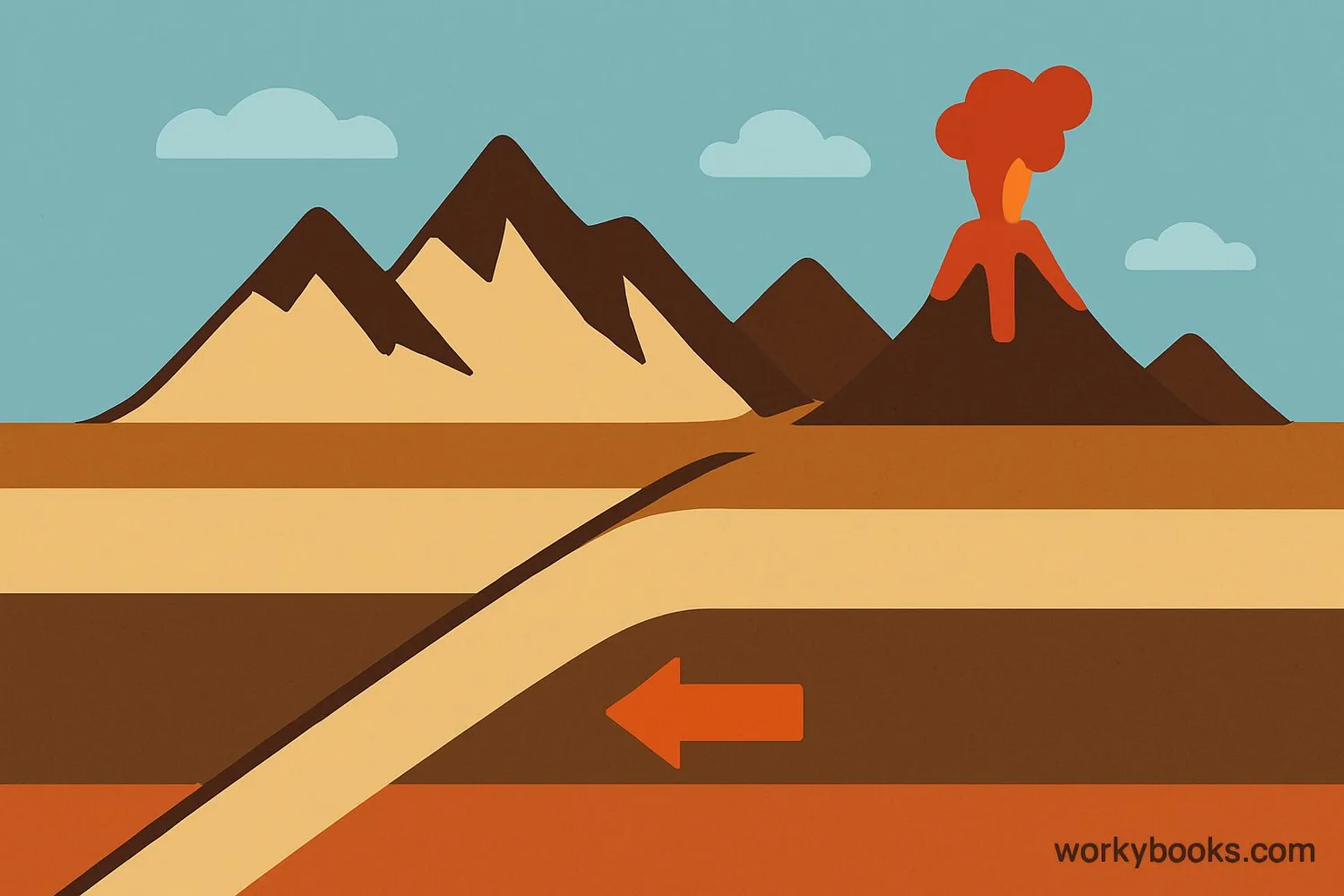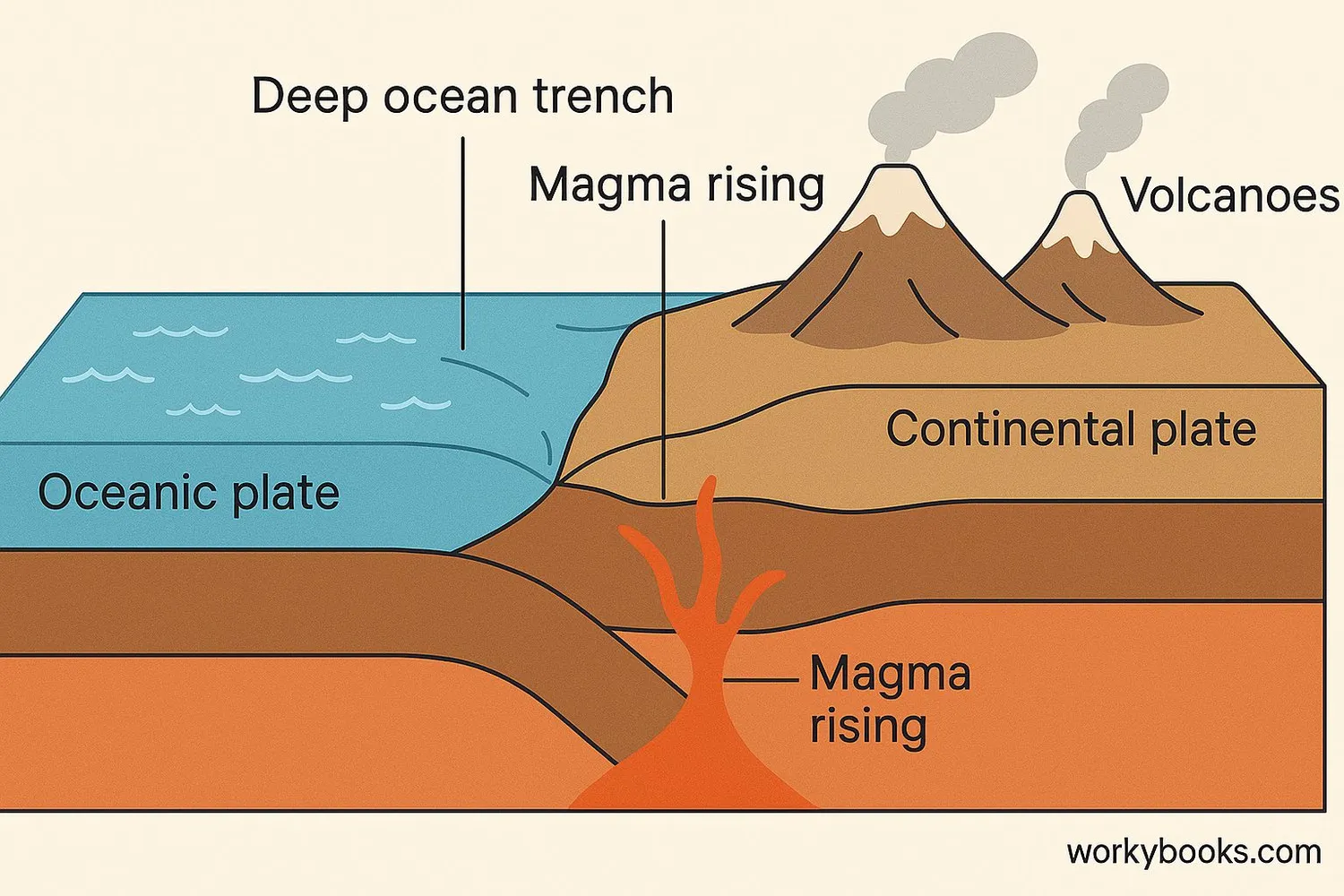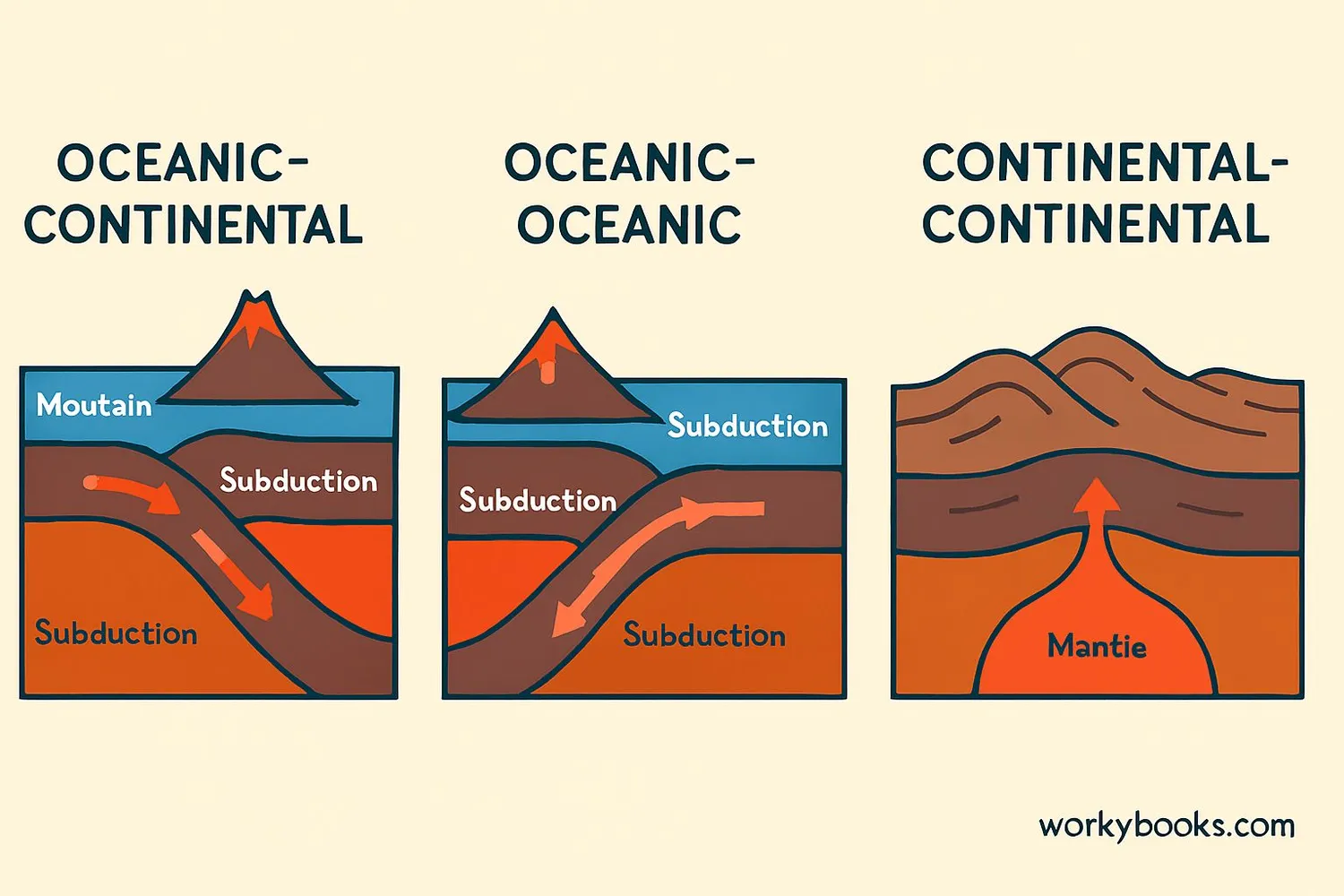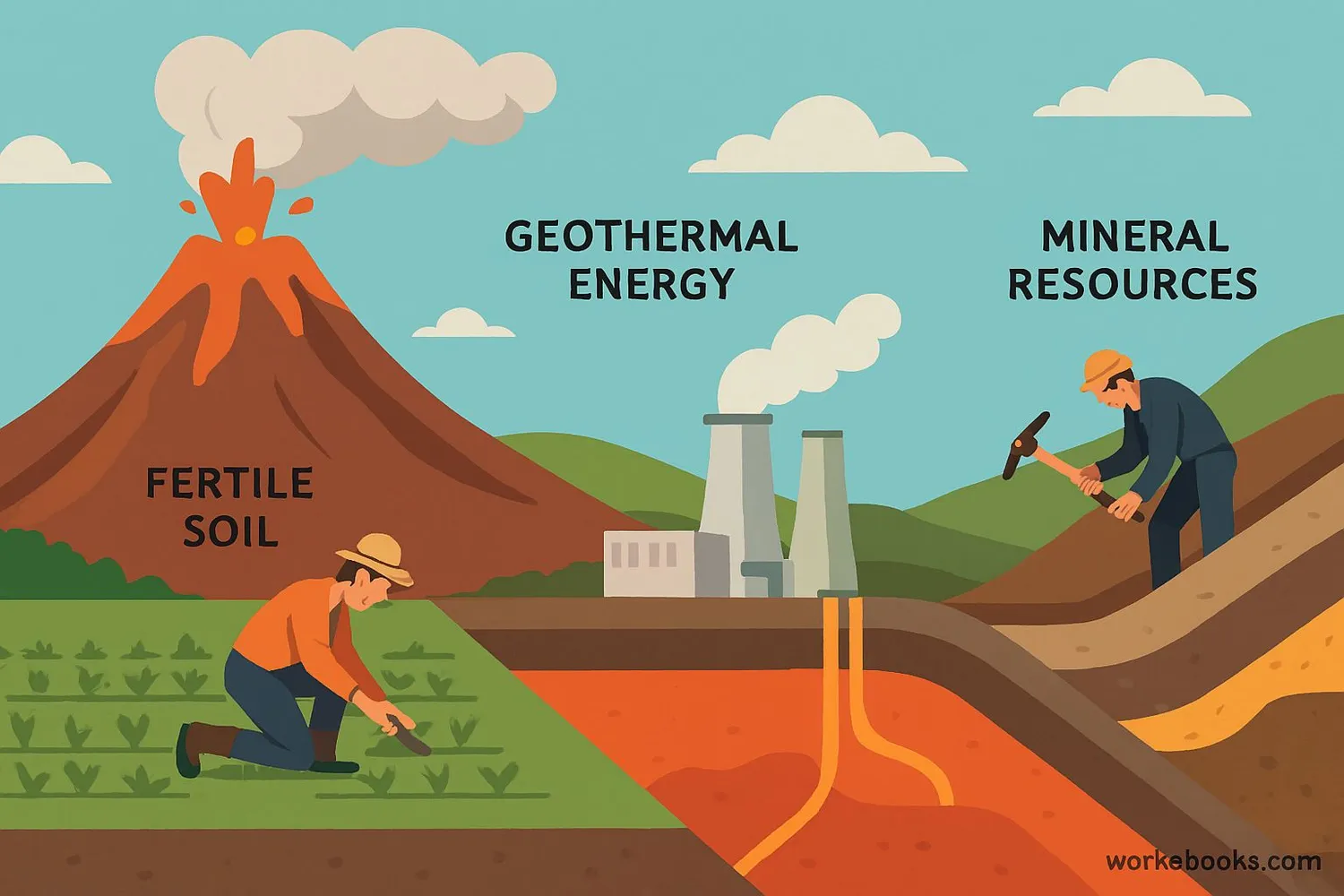Convergent Boundaries - Definition, Examples, Quiz, FAQ, Trivia
Discover how Earth's colliding tectonic plates create mountains, volcanoes, and earthquakes!
What is a Convergent Boundary?

A convergent boundary is where two of Earth's tectonic plates move toward each other and collide. Imagine two giant puzzle pieces slowly crashing together! This collision creates some of Earth's most spectacular features:
Mountains: When plates push together, land crumples and folds upward, creating mountain ranges.
Volcanoes: When one plate slides beneath another, it melts and forms magma that erupts as volcanoes.
Earthquakes: The pressure from plates colliding causes the ground to shake.
Did You Know?
The Himalayas, the tallest mountains on Earth, formed when the Indian plate crashed into the Eurasian plate about 50 million years ago!
How Convergent Boundaries Work

Convergent boundaries work through a process called subduction. When two plates collide:
Collision
Two tectonic plates move toward each other
Subduction
The denser plate slides beneath the lighter plate
Melting
The sinking plate melts as it goes deeper
Magma Formation
Melted rock forms magma that rises upward
Surface Features
Volcanoes erupt and mountains form
The type of crust on each plate determines what happens:
• Oceanic + Continental: Oceanic plate subducts beneath continental plate
• Oceanic + Oceanic: One oceanic plate subducts beneath the other
• Continental + Continental: Plates crumple and fold, forming mountains
Types of Convergent Boundaries

There are three main types of convergent boundaries, each creating different geological features:
Oceanic-Continental
Oceanic plate subducts under continental plate. Forms volcanic mountains and trenches.
Example: Andes Mountains
Oceanic-Oceanic
One oceanic plate subducts under another. Forms volcanic island arcs and deep trenches.
Example: Mariana Trench and Islands
Continental-Continental
Both plates crumple and fold. Forms massive mountain ranges without volcanoes.
Example: Himalayas
Deepest Point on Earth
The Mariana Trench formed where the Pacific Plate converges with the Mariana Plate. At nearly 7 miles deep, it's deeper than Mount Everest is tall!
Why Convergent Boundaries Matter

Convergent boundaries shape our planet in important ways:
Fertile Soil
Volcanic ash creates nutrient-rich soil for farming
Geothermal Energy
Heat from below Earth's surface can be used for energy
Mineral Resources
Metals and minerals form near convergent boundaries
While convergent boundaries can cause earthquakes and volcanic eruptions that are dangerous, they also:
• Create beautiful mountain landscapes
• Form new land through volcanic activity
• Help recycle Earth's crust
• Provide resources we use every day
Understanding convergent boundaries helps scientists predict natural disasters and keep people safe!
Convergent Boundary Quiz
Test your knowledge about convergent boundaries with this quiz! Answer all 5 questions to see how much you've learned.
Frequently Asked Questions
Here are answers to common questions about convergent boundaries:
Fun Geology Trivia
Discover amazing facts about convergent boundaries:
Growing Mountains
The Himalayas are still growing! India continues to push into Asia at about 2 inches per year, making Mount Everest about 0.16 inches taller each year.
Ring of Fire
The Pacific "Ring of Fire" is a horseshoe-shaped zone with 75% of the world's volcanoes. It's formed by convergent boundaries where oceanic plates subduct beneath continental plates.
Deepest Point
The Mariana Trench is so deep that if Mount Everest were placed at the bottom, its peak would still be over a mile underwater! This trench formed at a convergent boundary.
Powerful Earthquakes
The strongest earthquake ever recorded (9.5 magnitude in Chile, 1960) occurred at a convergent boundary where the Nazca Plate subducts beneath the South American Plate.


